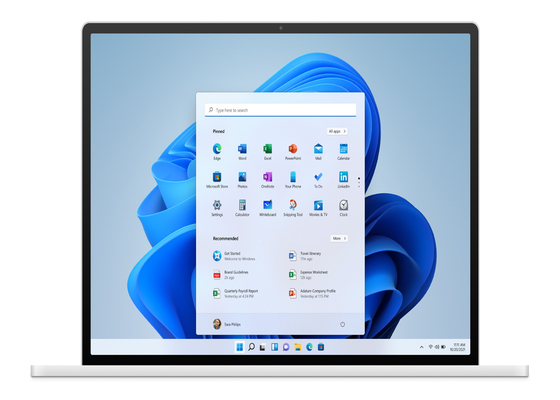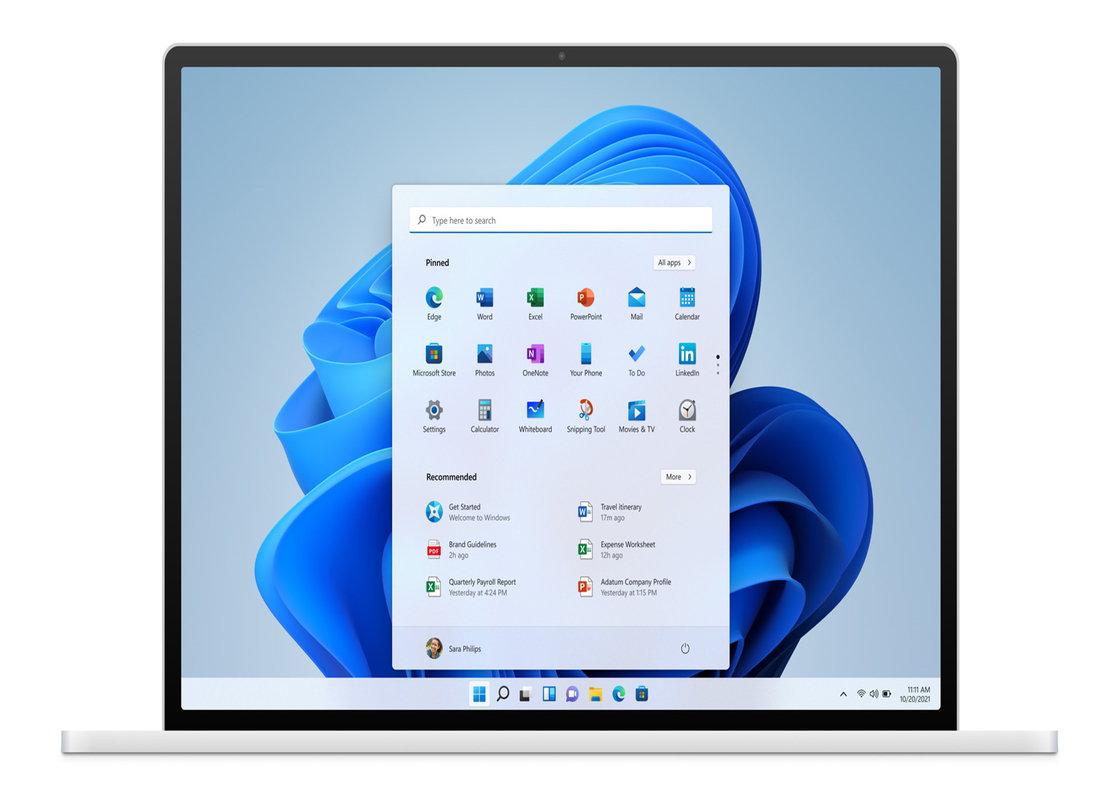Windows 11 License Product Key Delivery Quick Quality Assurance
Here are the basic requirements for installing Windows 11 on a computer. If your device does not meet these requirements, you may not be able to install Windows 11 on your device, and it is recommended that you consider purchasing a new computer. If you are unsure whether your computer meets these requirements, consult your original equipment manufacturer (OEM); If your device is already running Windows 10, you can use the PC Health Check app to assess compatibility.
| Products |
Windows 11 License Product Key
|
| Processor: |
1 GHz or faster support for 64-bit processors (dual or multi-core) or system-on-a-chip (SoC) |
| RAM: |
4 GB |
| Storage: |
64 GB or larger storage devices |
| Note: |
For more information, see "More information about the storage space required to keep Windows 11 up to date" below. |
| System firmware: |
Support UEFI safe startup |
| TPM: |
Trusted Platform Module (TPM) version 2.0 |
| Video: |
DirectX 12 or higher is supported, and WDDM 2.0 drivers are supported |
| Display: |
The high-definition (720p) display, which is diagonally larger than the 9-inch display, has 8 bits per color channel |
Windows 11 features specific requirements
Some features in Windows 11 have additional requirements that go beyond the minimum requirements listed above. Here are the additional requirements for some of the main features:
5G support requires a 5G-enabled modem.
Automatic HDR requires an HDR monitor.
BitLocker To Go requires a USB flash drive (only available in Windows Pro and later).
Client Hyper-V requires a processor that supports secondary address translation (SLAT) (available only in Windows Professional and higher).
Cortana, which requires a microphone and speaker, is currently available in Windows 11 in Australia, Brazil, Canada, China, France, Germany, India, Italy, Japan, Mexico, Spain, the United Kingdom and the United States.
DirectStorage requires 1 TB or greater of NVME SSD to store and run games using the "standard NVM Express Controller" driver and the DirectX 12 Ultimate GPU.
DirectX 12 Ultimate requires a supported game and graphics chip.
The state requires sensors that can detect the distance between the person and the device or that are used to interact with the device.
Smart video conferencing requires a video camera, microphone, and speakers (audio output).
Multi-voice assistant (MVA) requires a microphone and speaker.
A taped three-column layout requires a screen with 1920 or more effective pixels in width.
Mute/unmute from the taskbar requires a video camera, microphone, and speaker (audio output). Applications must support global mute/unmute capabilities.
Space audio requires support for hardware and software.
Teams requires video cameras, microphones and speakers (audio output).
Touch requires a screen or monitor that supports multi-touch.
Two-factor authentication requires the use of a PIN, a biometric identifier (a fingerprint reader or a filling-light infrared camera), or a Wi-Fi or Bluetooth-enabled phone.
Voice input requires the computer to have a microphone.
Voice wake-up requires a modern standby power mode and a microphone.
Wi-Fi 6E requires new WLAN IHV hardware and drivers as well as an AP/ router that supports Wi-Fi 6E.
Windows Hello requires either a near-infrared (IR) imaging camera or a fingerprint reader for biometric authentication. Devices that do not have biosensors can use Windows Hello Pin or a -compatible portable security key.
Windows Projection requires a display adapter that supports the Windows Display Driver Model (WDDM) 2.0 and a Wi-Fi adapter that supports Wi-Fi Direct.
Xbox (ap) require an Xbox Live account (not available in all regions). For the latest information on availability, see Xbox Live Countries and Regions. Some features in the Xbox app require a valid Xbox Game Pass subscription. Learn more about Xbox Game Pass.
Function deprecation and removal
Certain features may be deprecated or removed when upgrading from Windows 10 to Windows 11 or when installing updates to Windows 11. Check out the following information about some of the key features affected:
Cortana will no longer be included in the first startup experience, nor will it be fixed in the taskbar.
Desktop Wallpaper cannot browse to or from the device when logging in with a account.
Internet Explorer will no longer be used. Edge became the recommended alternative, with IE mode, which might be appropriate in some cases.
The math input panel has been removed. Mathematical recognizers will be installed as needed, including mathematical input controls and recognizers. Math ink writing in applications such as OneNote is not affected by this change.
News and Interests in the taskbar have been removed. The widget will provide alternative functionality.
Quick status and related Settings on the lock screen have been removed
Mode S is now only available for Windows 11 Home Edition.
Skype MeetNow is replaced by "chat".
The Screenshot tool continues to work, but the old design and features in the Windows 10 version are replaced by those in the previous application called Screenshots and Sketches.
The Start menu has undergone major changes in Windows 11, including the deprecation and removal of the following major features:
Named grou and application folders are no longer supported. Layout resizing is removed.
When you upgrade from Windows 10, your existing ap and websites won't move with you.
Digma blocks are no longer available. For a quick preview of dynamic content, check out the new widget features.
Tablet mode has been removed, and new features will be shown in the connected and detached state of the keyboard.
Taskbar features include the following changes:
Networking no longer exists in the taskbar.
Some ICONS may no longer be displayed in the system tray after device upgrades, including previous customizations.
Taskbar locations are only allowed to align to the bottom of the screen.
Applications are no longer able to customize the taskbar area.
Timeline has been removed. Some similar features are available in Edge.
Touch keyboards will no longer have the option to fix and move keyboard layouts on screens 18 inches or larger.
Electronic wallets were removed.
The following ap will not be removed after the upgrade, but will no longer be installed on new devices or with a clean install of Windows 11. These ap are available for download from the Store:
- 3D Viewer
- OneNote for Windows 10
- Draw 3 d
- Skype
Keep Windows 11 up to date
To continuously improve the Windows experience, we create and distribute software updates and fixes. These updates are pushed to your device over the life cycle of device support.
Making sure you keep your devices up to date is important for both the safety and functionality of your devices. With an Internet connection, Windows 11 will check for updates on a regular basis without your having to worry about (possibly incurring ISP fees). You can view the equipment if there is any pending or optional updates, method is to enter the "Settings" | "updates and security" | "Windows update".
If you need help installing updates, the Windows 11 Update Assistant can help. It is important to ensure that you have sufficient available storage to install updates, and you may need to verify that your hardware is still supported by the original equipment manufacturer (OEM).
Visit the Windows Product Lifecycle FAQ for more information about the Windows Lifecycle and Service Policy.
More information about the storage space you need to keep Windows 11 up to date
The size of the Windows operating system pre-installed on a device and the amount of available storage required to download and install Windows updates can vary greatly depending on a variety of factors. Visit here to learn why. Factors that affect the amount of free space required for an update include: the previous version of Windows installed on your computer; The amount of storage space available for reuse of Windows files, such as virtual memory page files or sleep files; What applications are installed on the device and how those applications store data. When you update, Windows will automatically try to free up enough space, and will instruct you to free up more if auto-cleanup is not enough. You can also do it yourself to free up space.


 Your message must be between 20-3,000 characters!
Your message must be between 20-3,000 characters! Please check your E-mail!
Please check your E-mail!  Your message must be between 20-3,000 characters!
Your message must be between 20-3,000 characters! Please check your E-mail!
Please check your E-mail! 





